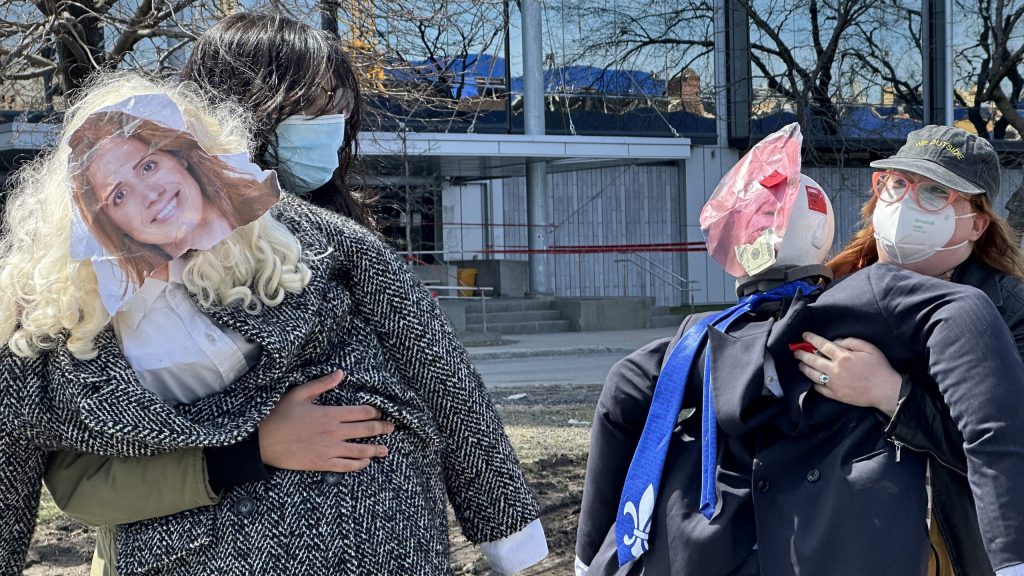New federal COVID-19 modelling shows vulnerabilities in Canada

Posted June 4, 2020 10:59 am.
Last Updated June 5, 2020 12:29 am.
OTTAWA (NEWS 1130) — The latest federal modelling data shows Canada has been able to slow epidemic growth sooner than other countries, but COVID-19 continues to affect older populations and dense settings, and could claim another 2,000 lives by the middle of the month.
Chief Public Health Officer of Canada, Dr. Theresa Tam said Thursday the short-term data predicts deaths could reach 9,400 by June 15, while cases could top 107,000.
To date, Canada has recorded more than 93,000 cases and close to 7,500 deaths.
Tam said the data makes it clear there are regional epidemics in Canada, with the highest number of cases concentrated in the four most populous provinces.
“Quebec and Ontario account for the vast majority of cases, overall, and community transmission hotspots persist in and around the Toronto and Montreal areas,” Tam said.
Quebec and Ontario cases account for more than 90 per cent of those nationally over the past 14 days, while no community transmission has occurred to date in Prince Edward Island, the Northwest Territories, or the Yukon, she added.
She also said COVID-19 has exploited social and economic vulnerabilities and inequalities across Canadian society, taking hold in settings and among communities that experience overcrowding, lower incomes, and health disparities.
“Long-term care and assisted-living homes have been hit the hardest, with more than 900 separate outbreaks, accounting for about 18 per cent of confirmed cases and 82 per cent of all deaths. Outbreaks in other congregate living and work settings are also driving case counts in some provinces. These settings include acute care, daycares, correctional facilities, and workplaces, including Canada’s largest outbreak linked to a meat processing plant,” Tam added.
People 60years or older make up clear majorities of deaths and hospitalizations. 82% of deaths linked to long term care facilities and seniors homes #Cdnpoli pic.twitter.com/64yO16fmUl
— Cormac Mac Sweeney (@cmaconthehill) June 4, 2020
She reiterated Canadians need to be careful to prevent a second wave of the coronavirus in the fall.
“These models all tell us if we relax too much or too soon, the epidemic will most likely rebound with explosive growth as a distinct possibility.”
As of June 2, Tam said the number of deaths per confirmed cases has increased eight per cent, while 16 per cent of those testing positive have required hospitalization, and three per cent were admitted to intensive care.
“Lab-confirmed cases are an estimate of the total number of people impacted in Canada,” she said.
In a best-case scenario, Tam added, a person would only transmit the virus to less than one other person, on average. The transmission rate needs to stay consistently below one for more than three weeks before it is known that public health measures are effectively controlling the epidemic, she said.
Although people of all ages and gender can develop COVID-19, Tam said older adults and people of all ages with chronic medical or immune compromising health conditions continue to be most vulnerable and are at a higher risk for hospitalization and death.
“Currently, adults age 60 years and older account for the majority of the hospitalizations.”
The Chief Public Health Officer warns of we relax public health measures too much or too soon we risk a dramatic rebound in cases #cdnpoli pic.twitter.com/LDegExkHKt
— Cormac Mac Sweeney (@cmaconthehill) June 4, 2020
Tam also said cases among children remain low, while middle-aged adults account for the majority of those.
The data also shows prevention control measures are working to control outbreaks in dense settings, such as care homes, food-processing plants, and prisons. However, transmission in such instances goes beyond workplaces and prevention control measures need to take into account living conditions, in particular among temporary foreign workers, Tam said.
“That is an absolutely vital aspect of controlling the epidemic, and going forward I think the collective amount of global information, but also in Canada shows close, crowded spaces, and close contacts lead to what, we might call, these bigger or larger clusters, or sometimes what we call super-spreading events. Those are the kinds of settings that’s becoming quite evident,” she said.
“More actual analysis of the social connects beyond just the workplace, but the crowded living conditions, perhaps of the workers and their linkage, then to the wider community, is another area that we’ve learned about. So it’s not just the workplace, but the transportation between someone’s home and the workplace, but also the homes themselves, if they’re in crowded conditions.”
Tam added that protecting a resurgence means escalating best practices in all those settings.
“We’ve also been working with Correctional Services Canada and provinces and territories to ensure that the infection control protocols for prevention, but also what to do rapidly if they detect a case in correctional facilities, there are now protocols in place, and rapidly test, then manage those outbreaks.”
Lastly, Tam said without a vaccine, or treatments, public health measures remain essential to controlling the pandemic.
“As we proceed with the relaxation of public health measures to reopen society, data and modeling reinforce that core public health measures are essential for maintaining control of Canada’s COVID-19 pandemic,” she added.
Public health efforts to slow epidemic growth show that Canada has been able to bend and flatten the curve sooner than a number of countries, Tam said.
“Other countries, such as South Korea and Japan, demonstrated strong epidemic control to keep the curve smaller overall, but all countries realize that this is an ongoing effort that requires sustained public health measures to avoid new outbreaks and a rebound in epidemic activity.”



